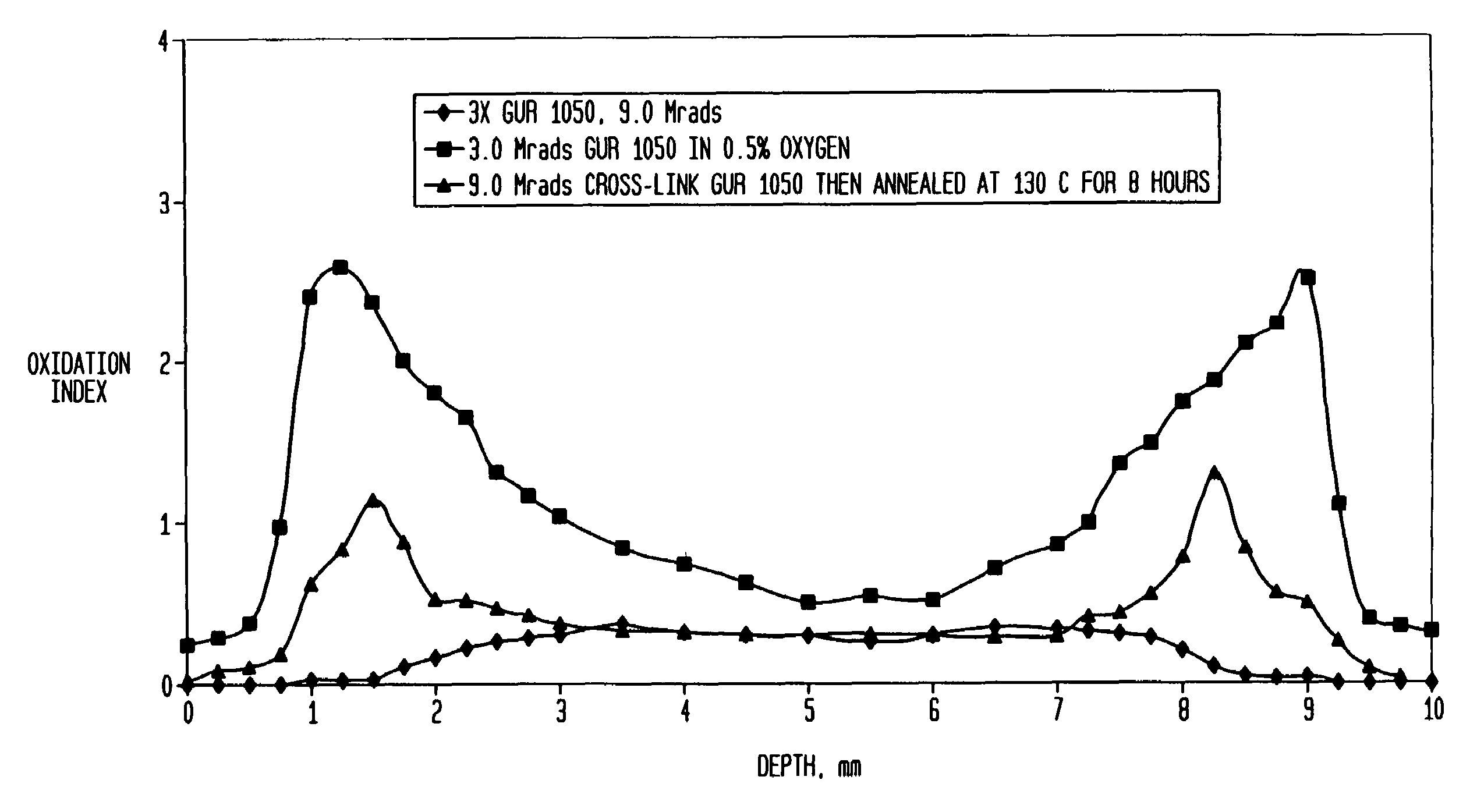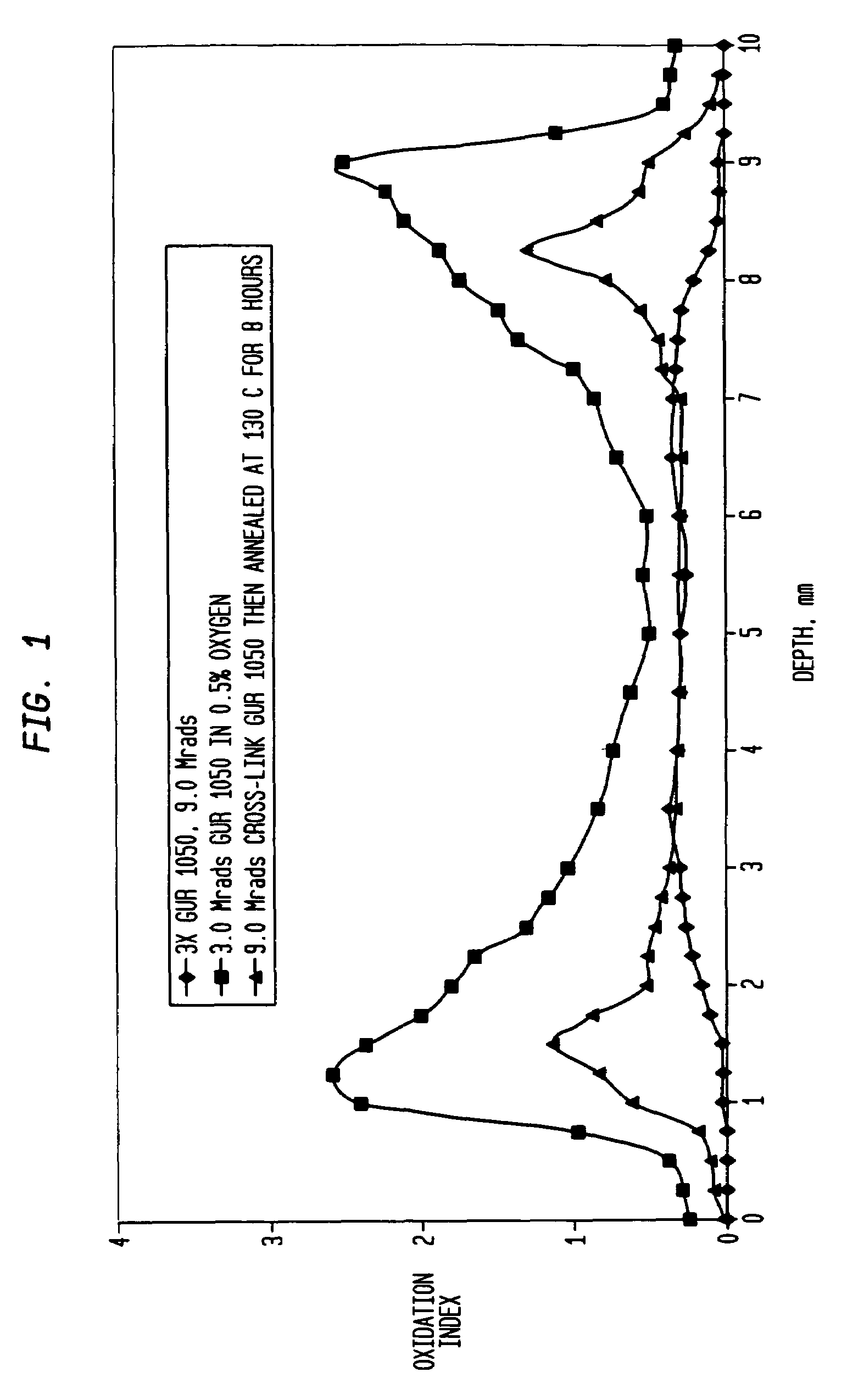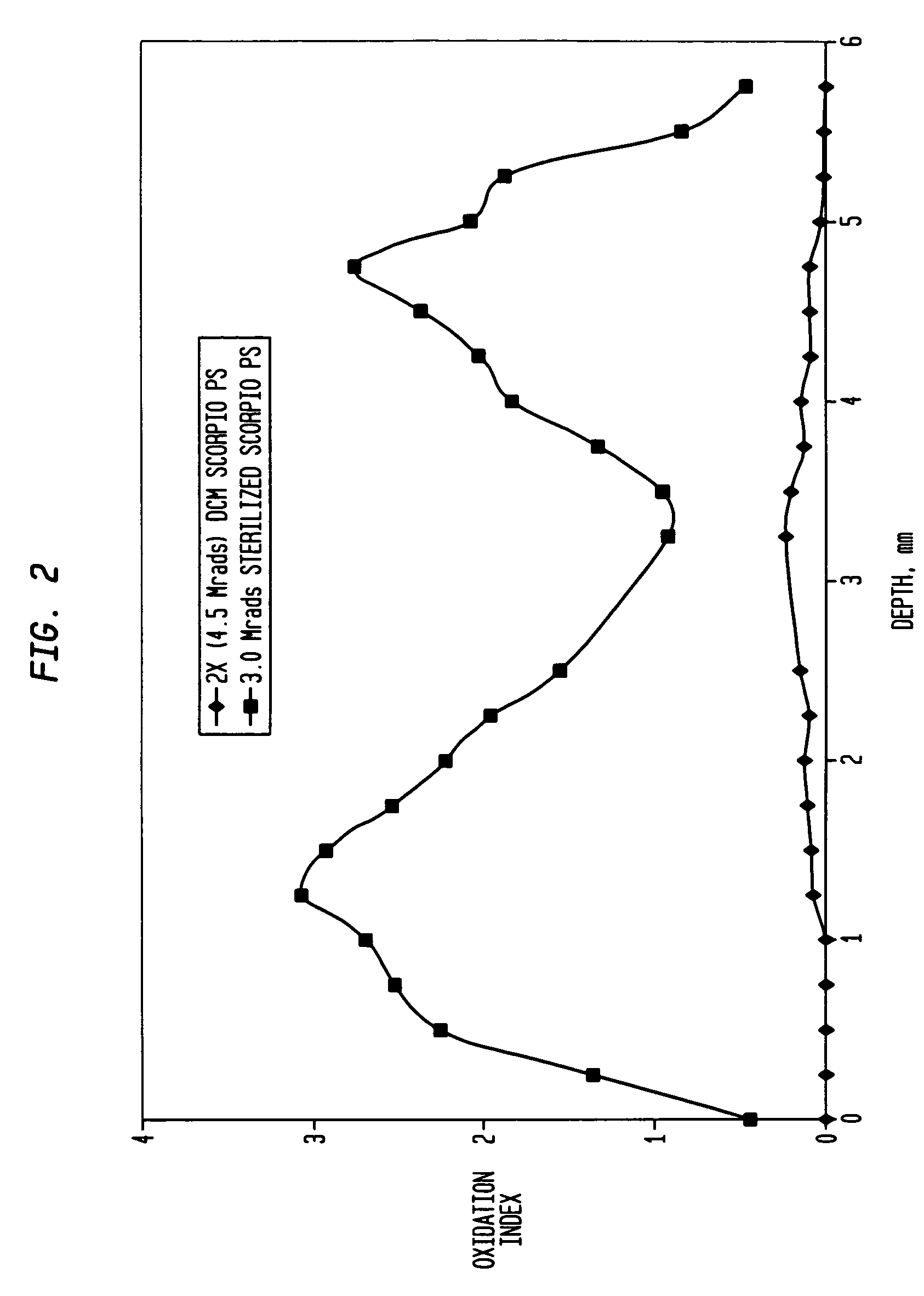Sequentially cross-linked polyethylene
a cross-linked polyethylene and polyethylene technology, applied in the field of medical implants, can solve the problems of preventing the movement of free radicals from the crystal to the amorphous region, unable to employ stabilizers, antioxidants, chemical compounds, etc., and achieves enhanced wear resistance, improved oxidation resistance, and improved mechanical properties.
- Summary
- Abstract
- Description
- Claims
- Application Information
AI Technical Summary
Benefits of technology
Problems solved by technology
Method used
Image
Examples
example i
[0080]As stated above, the ultra-high molecular weight polyethylene extruded rod is irradiated for a sufficient time for an accumulated incremental dose of between 2 and 5 (MRads) (20 to 50 kGy). After this irradiation step, the extruded rod is annealed in air preferably at a temperature below its melting point, preferably at less than 135° C. and more preferably between 110° C. and 130° C. The irradiation and annealing steps are then repeated two or more times so that the total radiation dose is between 4 and 15 MRads (50 to 150 kGy). In this example, the rod is irradiated for a total dose of 3 MRad and then annealed at 130° C. for 24 hours, allowed to cool to room temperature and sit for 3 days and then reirradiated for a dose of 3.0 MRads (a total dose of 6 MRads) again annealed at 130° C. for 24 hours, allowed to cool at room temperature and sit for an additional 3 days and then irradiated a third time with a 3.0 MRad dose (for a total of 9 MRads) and again annealed at 130° C. f...
example ii
[0083]A machined tibial implant in its final form is packaged in an oxygen reduced atmosphere having an oxygen concentration less than 1% volume by volume. The packaged implant is then processed as described in Example I through a series of three (3) irradiation and annealing cycles as described above with the total radiation dose being 9 MRads. The implant was then boxed and ready for final shipping and use.
example iii
[0084]Two ultra-high molecular weight polyethylene rods (one of compression molded GUR 1020 and the other of ram extruded GUR 1050) with a cross-section profile of 2.5-inch×3.5-inch (GUR 1020) and 3.5-inch diameter (GUR 1050), respectively, were used. Lengths of these rods were sectioned into 18-inch lengths; three 18-inch rods (staggered and separated by small paper boxes) were packaged in a paper carton before the sequential radiation process. The purpose of the packaging and staggering was to reduce the possibility of blocking the radiation (gamma rays) to each individual rod during the process.
[0085]The rods went through the following sequential process in air:
[0086]1. Each rod received a nominal dose of 30 kGy gamma radiation;
[0087]2. Each was then annealed at 130° C. for 8 hours; and
[0088]3. Steps 1 and 2 were repeated two more times. Preferably, the repeated steps occurred within three days each.
[0089]While the process was done in air, it could be performed in an inert atmosp...
PUM
| Property | Measurement | Unit |
|---|---|---|
| temperature | aaaaa | aaaaa |
| temperature | aaaaa | aaaaa |
| temperature | aaaaa | aaaaa |
Abstract
Description
Claims
Application Information
 Login to View More
Login to View More - R&D
- Intellectual Property
- Life Sciences
- Materials
- Tech Scout
- Unparalleled Data Quality
- Higher Quality Content
- 60% Fewer Hallucinations
Browse by: Latest US Patents, China's latest patents, Technical Efficacy Thesaurus, Application Domain, Technology Topic, Popular Technical Reports.
© 2025 PatSnap. All rights reserved.Legal|Privacy policy|Modern Slavery Act Transparency Statement|Sitemap|About US| Contact US: help@patsnap.com



